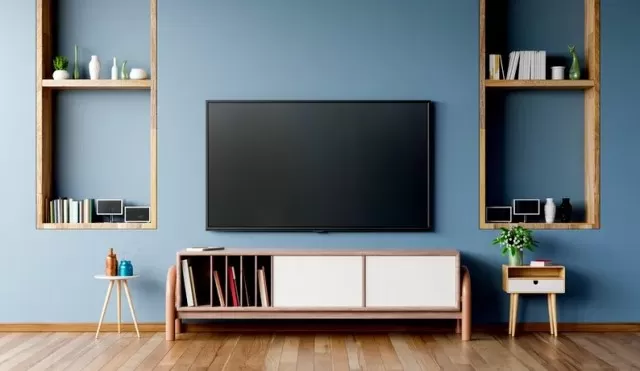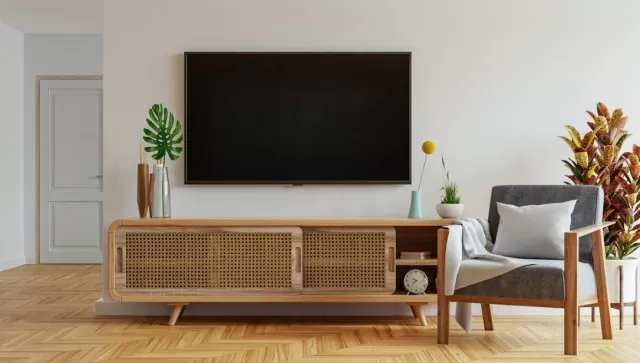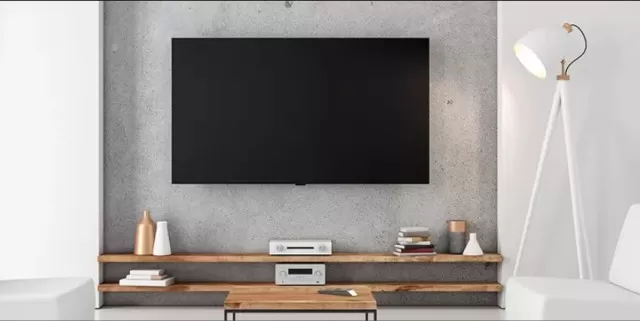In today’s world, TVs have evolved beyond being mere electronic devices. Let’s explore 5 smart and effective ways to hide those unsightly tv cords.
You go through the process of mounting it on the wall, connecting all the necessary cables, and eagerly settle down to enjoy your favorite TV show.
However, instead of being able to fully relax and immerse yourself in the experience, your attention is constantly drawn to the unsightly mess of cords staring back at you.
In today’s world, TVs have evolved beyond being mere electronic devices.
They have become an integral part of our home decor, especially with the emergence of sleek flat screens that can double as framed artwork when not in use. However, the presence of tangled cords can undermine the aesthetic appeal you’re striving for, particularly if you have pristine white or neutral walls.
The good news is that there are several ingenious methods available to cleverly conceal those pesky TV wires, allowing you to enjoy a seamless viewing experience, whether you’re indulging in a solo Netflix binge or hosting guests.
5 Best Clever Ways to Hide TV Cords

Conceal Behind the Wall.
The most effective way to hide TV cords involves a bit of effort but yields excellent results.
By concealing the cables behind the wall, you can make them virtually invisible from any angle. This method requires marking and cutting two holes in the wall, one below the TV and the other near the power outlet.
Low voltage brackets or boxes are then installed, allowing the wires to run from top to bottom. This setup enables you to plug in the cords at the entry and exit points, creating a clean and seamless look between the TV and the console or cabinet beneath it.
Utilize a Cable Raceway.
A simpler alternative for hiding cords of a mounted TV is to use a cable concealer kit, also known as a cable raceway.
This smooth PVC cover attaches directly to the wall with adhesive, eliminating the need for additional drilling. The cable raceway runs along the length of the wires and can be easily cut to fit any size or layout.
This flexibility allows you to mount the TV wherever it suits you best. Simply gather the cords together and snap the cover on top.
Additionally, you can paint over the cable raceways using the exact color of your walls to ensure they blend seamlessly.

Opt for a TV Stand with Built-in Outlet.
If mounting the TV on the wall is not feasible or desirable, you can still achieve a streamlined look by placing the TV on a stand or surface.
Look for a console, cabinet, or entertainment center that has an opening at the back for cord management. This way, you can route the cords through the back of the furniture, hiding them from view.
To further minimize visual clutter, choose an option with at least one cabinet door where you can store the cable box or router. This allows you to feed the cords through the back and up to the TV, resulting in a neater appearance compared to having the box sitting on the floor or top of the TV stand.
Employ a Cable Storage Box.
Cable storage boxes are gaining popularity, particularly for keeping home offices organized and elevated.
These discreet rectangular boxes come in various sizes and are designed to hold power strips, plugs of different sizes, and excess wires. Find a cable storage box that matches the style of your Living Room and place it on the floor near the outlet and cable jack.
This solution neatly contains the cords and keeps them out of sight.

Bundle and Organize TV Cords.
For a cost-effective solution to manage TV cords, consider bundling them together.
This simple technique significantly reduces the tangled mess of cords running in different directions. Clips, zip ties, adhesive hooks, and coiled sleeves can be used to gather the TV cables into a compact bundle.
An effective approach is to attach them along the baseboard behind the TV or at the back of the furniture supporting the TV. As a budget-friendly option, you can cut pieces from a Velcro roll to wrap and secure the TV cords.
Bonus Tip: Label the Cords.
Regardless of the method you choose to hide TV cords, it’s essential to label each cord.
Taking a few minutes to organize and label the cords now will save you time and potential headaches in the future. While some cords belong to you, others, such as the power cord of a cable box, may be owned by the cable provider and need to be returned if you switch services.
By identifying and labeling all the cords beforehand, you eliminate guesswork and potential hassles. Moreover, if you decide to relocate or remount your TV, reconnecting the cords will be a breeze with clear labels to guide you.
*The information is for reference only.